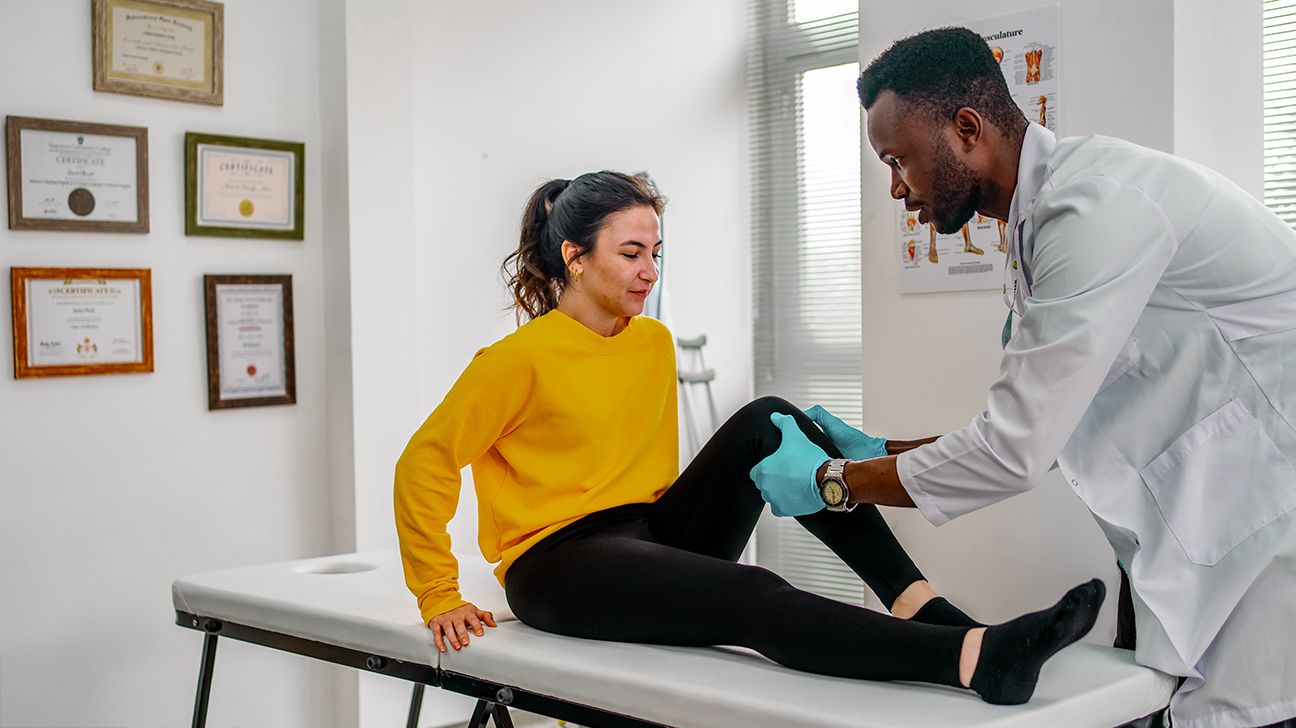This joint condition primarily affects young people. It’s important to know the stage of the disease to determine the best treatment options.

Osteochondritis dissecans is a joint problem that usually affects children and teenagers. It usually involves the knee, ankle, or elbow, but it can affect any joint.
Having osteochondritis dissecans means a section of bone and cartilage becomes starved of healthy blood supply and starts to separate from the rest of the joint.
Osteochondritis dissecans is a rare disorder, affecting an estimated 30 per 100,000 people — mostly male. The condition is split by its severity into 1 of 4 stages, which help determine treatment.
In early stages, physical therapy may help treat the condition, while more advanced stages may require surgery.
Read more about each stage of osteochondritis dissecans, how each stage affects treatment decisions, and the long-term outlook and quality of life for people affected by this condition.
Categorizing osteochondritis dissecans by stage helps healthcare professionals determine the best treatment plan, such as physical therapy or surgery.
In later stages, if a piece of bone has become completely detached, a surgical procedure using pins or screws may be necessary to correct the fracture.
Understanding the stage may also help you understand the nature of your condition, so you have a better idea of what to expect and what your outlook is after treatment.
At stage 1, osteochondritis dissecans is still relatively mild. The bone and cartilage are still attached, and minimal damage has occurred.
Stage 2 means a portion of bone has become partially detached and there is some damage — usually cracking — to the cartilage.
At stage 3, a piece of bone has become fully detached, but hasn’t moved from its original location. The cartilage is also cracked.
Stage 4 is the most severe form of osteochondritis dissecans. The cartilage is cracked and a piece of bone has become completely detached and has moved into the joint space.
Joint pain is common at all stages of osteochondritis dissecans, but imaging is the only way to formally diagnose the condition. Imaging may include the following:
- CT scan, which shows details of the bone, blood vessels, and soft tissue in the joint
- MRI with or without ultrasound to reveal detailed images of the bone and cartilage and to show if detached pieces have moved into the joint space
- X-rays to reveal details about the joint and the size and location of the bone lesion
Your doctor should also perform a physical examination to check on the joint’s stability to help provide a comprehensive assessment of the overall health of the affected joint.
In the early stages of osteochondritis, physical therapy is the preferred treatment option over surgery. In later stages, or if physical therapy and a break from sports or other taxing physical activities haven’t improved the condition, surgery may be necessary.
If you receive an osteochondritis dissecans
If your doctor has made a diagnosis of osteochondritis dissecans, you may have many questions about your condition and what comes next. Some of the key questions you might consider asking your doctor include:
- Could there be any other causes of my joint pain or problems with the bone and cartilage?
- What treatment plan do you recommend and why?
- What will the recovery and rehabilitation be like?
- How soon will I be able to resume my usual activities?
- Should I take any special precautions to prevent further complications?
The American Academy of Orthopaedic Surgeons reports that osteochondritis dissecans heals on its own in most children and teens. Still, if surgery is necessary, it may take 4 or 5 months of recovery and rehabilitation to regain full strength, flexibility, and range of motion.
If you or your child notice joint pain, swelling, or weakness, don’t hesitate to get a medical evaluation. Diagnosing osteochondritis dissecans at an early stage means it will be easier to treat, with a lower risk of complications.
